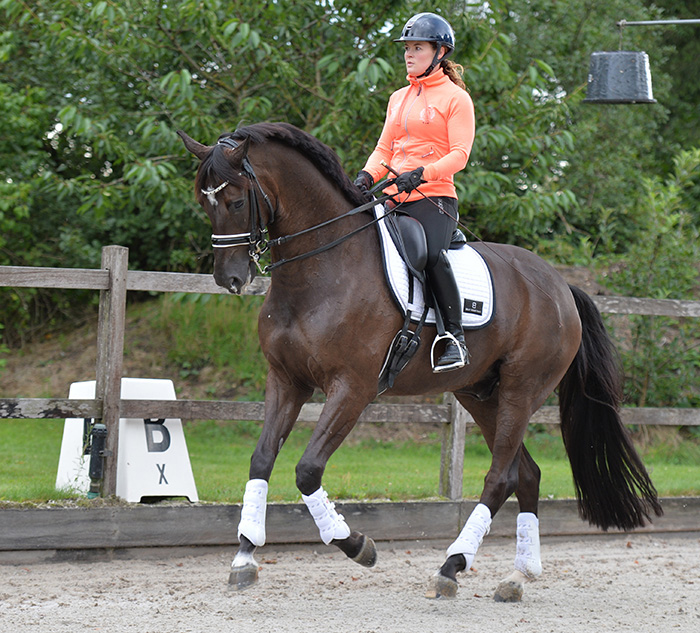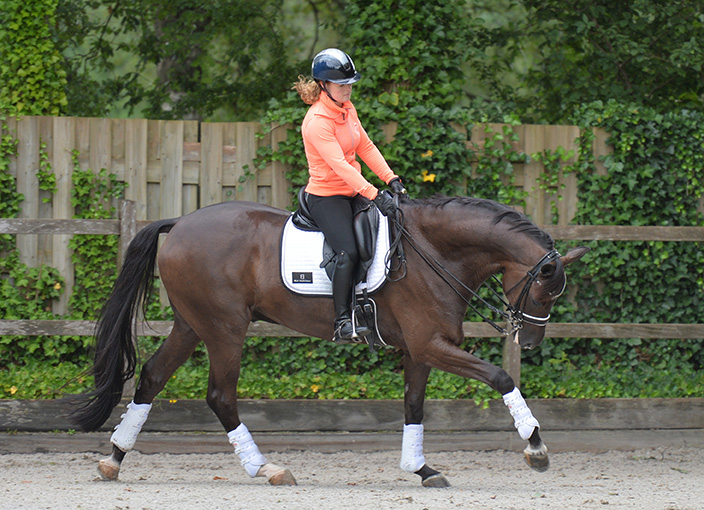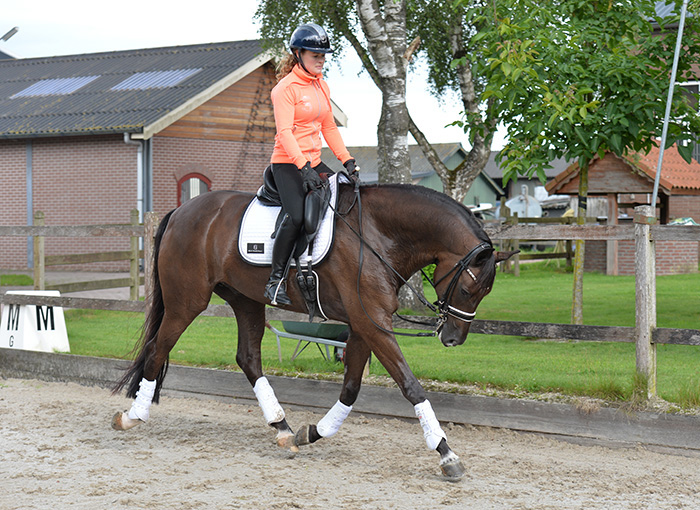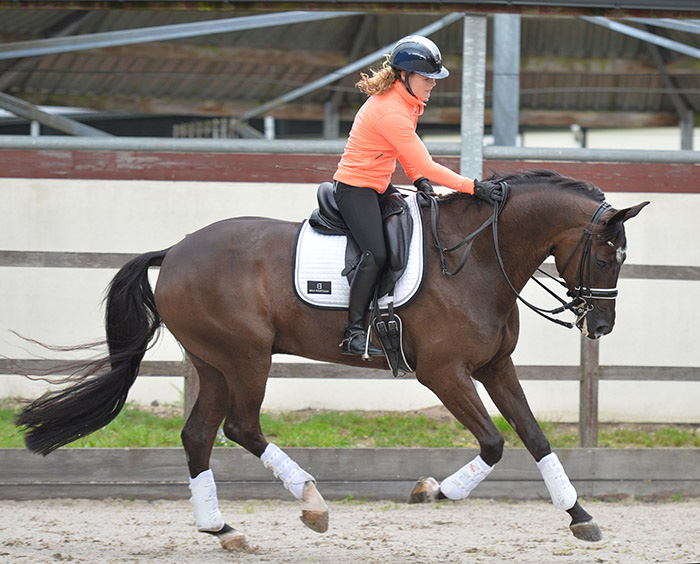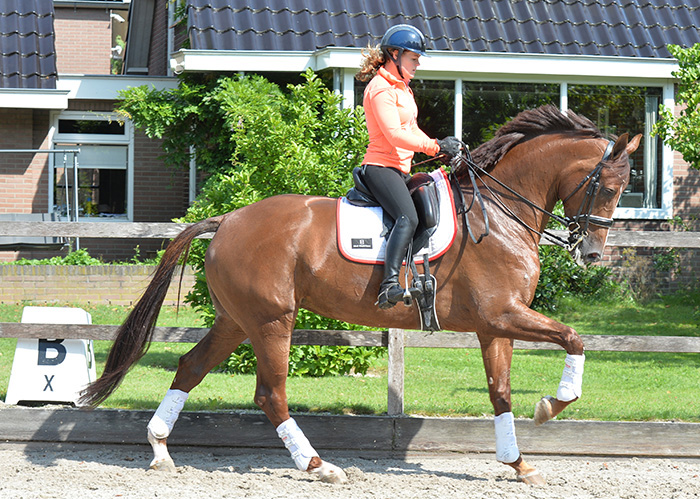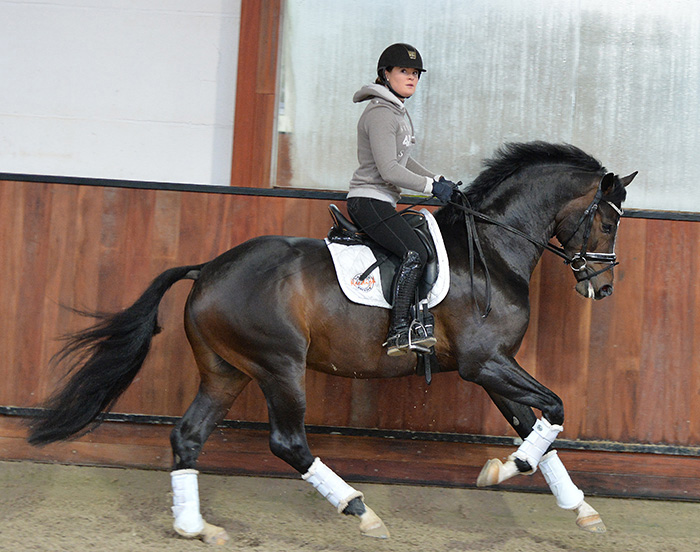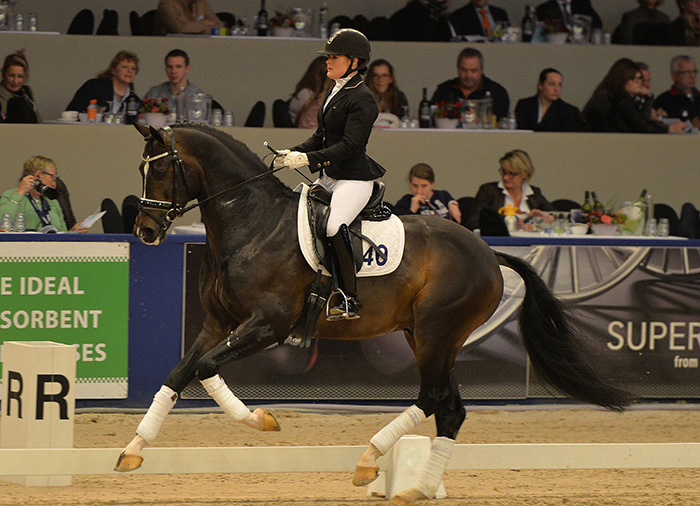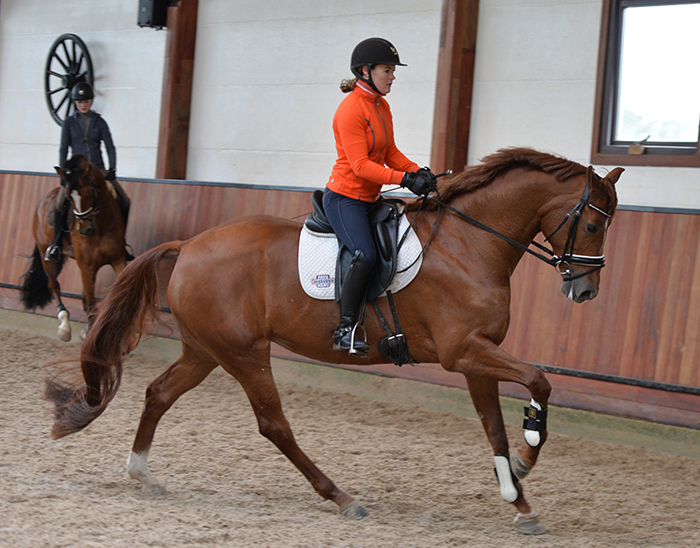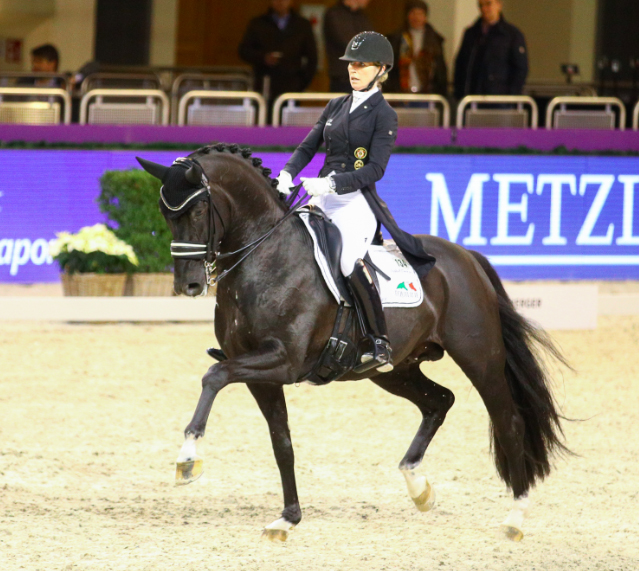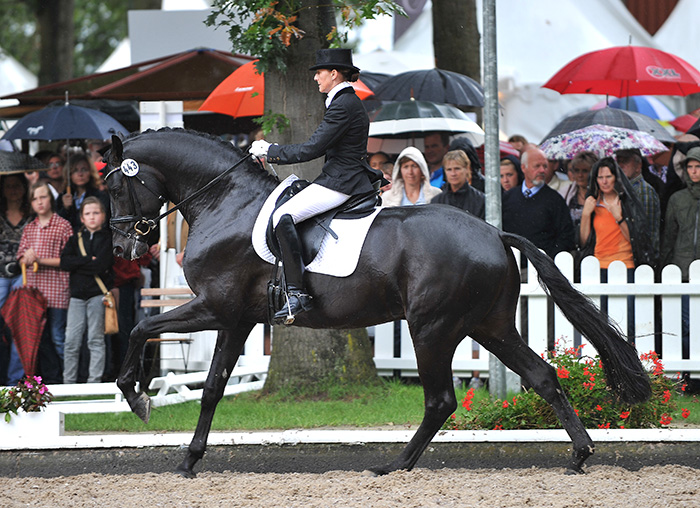Riders are obsessed with photos, and with good reason, they are a window into the correctness of horse and the rider, and very seldom does a good photo lie. If it looks good in the photo, chances are it is good – and vice versa. For this session in getting your eye in, we turn to Dutch master, Johan Hamminga who analyses these photos taken by Roslyn Neave of Jennifer Sekreve in action…
“When the horse is behind the vertical and has dropped the connection in the muscles of the top line, then you have a big problem. If he has lost the connection in the muscles of the topline, then he loses his hind legs and then you are on the wrong way.”
“You can see a lot in this picture, he is carrying the weight on the right hind leg. The canter is three beat. In this picture you see that the inside hind leg is two or three centimetres first on the ground, before the outside front leg. That’s the reason that the diagonal is broken a little bit, two or three centimetres – that’s the reason that the horse is up in the wither. You see it also here, the horse is five to ten centimetres higher in the wither than in the croup. In this moment the horse is carrying more weight on his hind legs and then the diagonal is a little bit broken by placing his inside hind leg first by two or three centimetres. Often we see horses, even in the Grand Prix, they are landing first on their outside front leg of the diagonal pair and then on their inside hind leg of the diagonal pair, then we have a horse short in the neck, down in the wither, and that is why the horse is landing on the outside front leg first, and that is wrong!
He could be a little bit more up in the neck, a little bit – but there is a real contact, smooth contact, and importantly, the wither is higher than the croup.”
Photographer’s comment – note pastern angles even when stretching – we can see where the horse is carrying his weight…
“Between the collection, let the neck fall down – longer, deeper, longer your reins, let him stretch a little more. Let the neck fall down, don’t pull it down, create a situation in which the horse wants to let go his body and relax his neck…’
“Take your time so that your horse is more relaxed, then he can really collect.”
“Here the horse is more in the test position. What I like in this one is that the left front leg is placed in front of the body because the horse is in front of the rider and there is enough drive in the horse, and that is very important for dressage training, that the horse always has the idea – I can go forward. Nice in the top line, inside hind leg is carrying more weight than the pair diagonal front leg. Again the nose could be just a bit more on the vertical.”
“There is a lot of uphill tendency in this picture, especially for a young horse, the wither is much much higher than the croup, the horse is steady on the bit, on the vertical, it could be a little bit higher in the poll perhaps. Especially important is his right hind leg is far under the body, under the vertical line of Jennifer, and is lower to the ground than the left front leg, this is still a true canter. Sometimes in the canter, the outside front leg of the diagonal is earlier on the ground than the inside hind leg, and then the horse has broken the diagonal, and is out of balance. Here you see the inside hind leg is for a very short moment, will come earlier to the ground, that is the reason the horse is so uphill.”
“The canter sequence is outside hind leg, diagonal pair, inside front leg, and the diagonal is a little broken because the inside hind leg is for a short moment, earlier on the ground, then you have the best canter there is.”
“Behind the vertical is not a problem when you can stretch the horse, and she is connected there, and she can follow your hand, then there is no problem. There is no problem when your horse is bending from behind and carrying his weight on his hindlegs THEN you can stretch him a little more and then you can bring the neck into a lower position – but THERE HAS to be a connection.”
Breeding your own dressage star this season? Go to www.ihb.com.au and don’t miss out on the best European bloodlines in the world – and available in Australia
Total Hope
Fürstenball
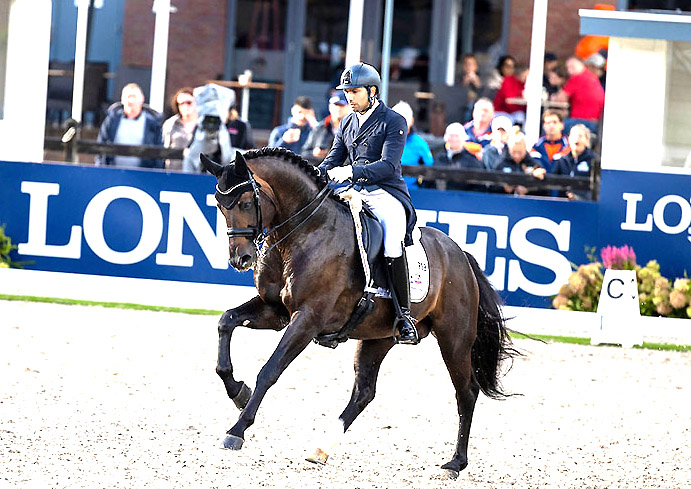
Escamillo



